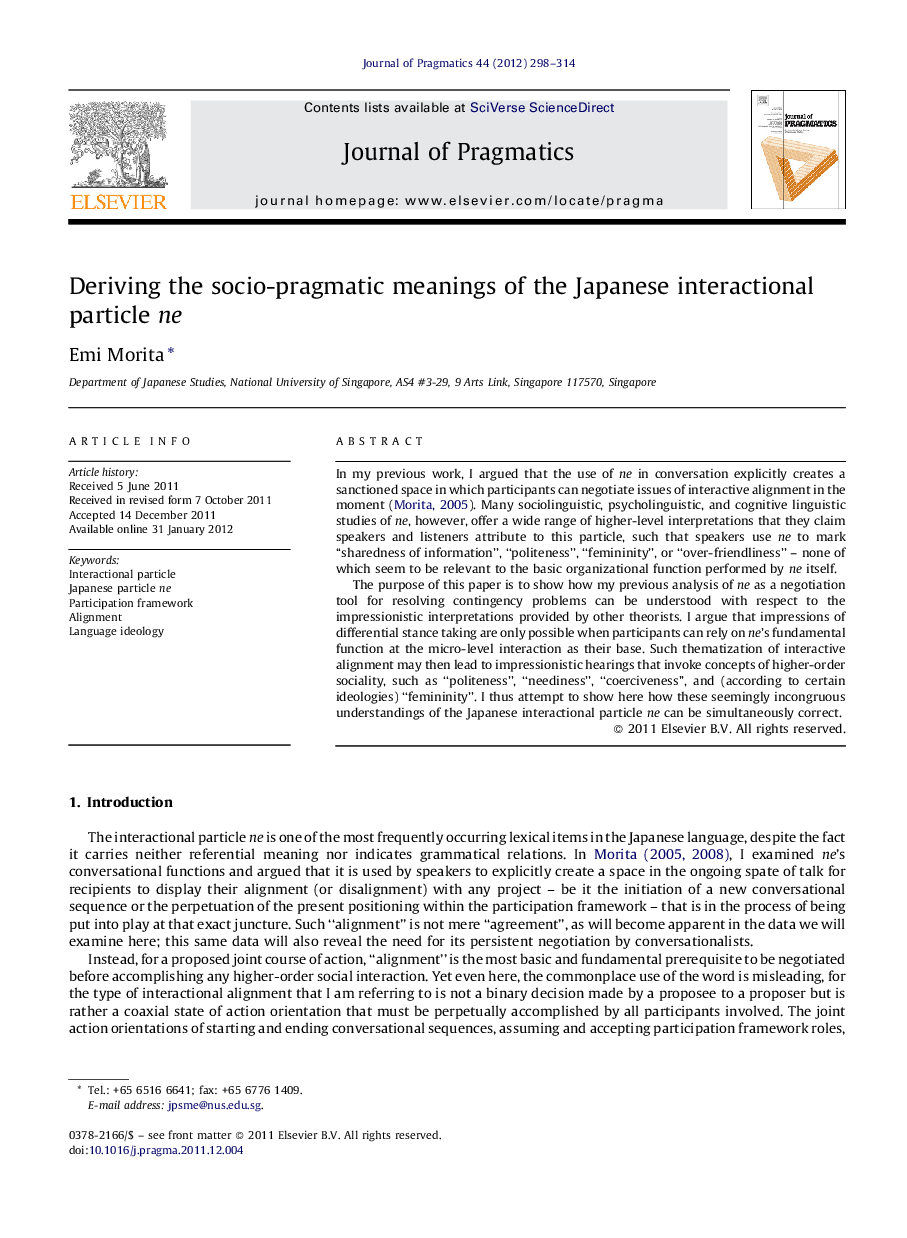| Article ID | Journal | Published Year | Pages | File Type |
|---|---|---|---|---|
| 933328 | Journal of Pragmatics | 2012 | 17 Pages |
In my previous work, I argued that the use of ne in conversation explicitly creates a sanctioned space in which participants can negotiate issues of interactive alignment in the moment ( Morita, 2005). Many sociolinguistic, psycholinguistic, and cognitive linguistic studies of ne, however, offer a wide range of higher-level interpretations that they claim speakers and listeners attribute to this particle, such that speakers use ne to mark “sharedness of information”, “politeness”, “femininity”, or “over-friendliness” – none of which seem to be relevant to the basic organizational function performed by ne itself.The purpose of this paper is to show how my previous analysis of ne as a negotiation tool for resolving contingency problems can be understood with respect to the impressionistic interpretations provided by other theorists. I argue that impressions of differential stance taking are only possible when participants can rely on ne's fundamental function at the micro-level interaction as their base. Such thematization of interactive alignment may then lead to impressionistic hearings that invoke concepts of higher-order sociality, such as “politeness”, “neediness”, “coerciveness”, and (according to certain ideologies) “femininity”. I thus attempt to show here how these seemingly incongruous understandings of the Japanese interactional particle ne can be simultaneously correct.
► Studies on Japanese interactional particle ne offer a wide range of interpretations. ► Such interpretations range from “femininity” to “shared information” to “politeness”. ► I argue that ne's function is to align the participation framework in ongoing talk. ► By thematizating issues of alignment in talk, ne highlights participant sociality. ► The paper shows how the impressionistic hearings derive from ne's functional work.
